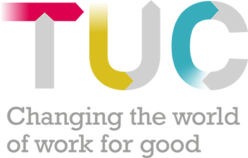By Eth Morgan & John Chadfield
We’re two tech workers; a software engineer and a product manager. Our role over the years has been to develop and maintain the kind of digital apps and tools that are now commonplace in people’s hands. We’re also trade unionists and members of the Tech Workers’ Coalition.
We’d been invited by TUC Digital Labs to share our expertise in working with a TUC affiliate, the Royal College of Midwives, as part of a pilot project, looking at questions around improving the accuracy of member data – something that’s key to helping the union’s work in continually improving their membership experience.
We joined the project to help explore ideas using digital design principles, and one of those principles is sometimes to build at little as possible, or even nothing!
Even amongst those that work in trade unions, it’s easy to fall prey to the Silicon Valley hype about using software to replace people. Good software empowers people.
We had a few initial conversations with RCM about their situation, the resources available and some of the pain points they were facing when it came to data and digital. It was obvious from the outset that data validity (that is, data on union members) was a central challenge upon which many other potential solutions depended – and probably a similar concern across most unions. We proposed that we should start by testing out the initial assumption that there is a digital solution to improving this situation.
In our day jobs, we live by the principle that software should be designed from a user’s perspective, with their needs at the forefront of our design and engineering solutions.
Part of any interaction with unions looking to explore digital, is introducing this concept. New things should be interesting and interactive, so we started with a collaborative workshop, in which we co-designed a membership experience map, in order to better understand the lifecycle of the union’s members, their career touchpoints from education to labour market entry, to careers breaks and retirement. The union included a variety of staff from different parts of the organisation, so that we were able to get as complete a picture as possible.
Mapping this member lifecycle out visually with post-it notes on a wall was a really quick and easy way to get everyone on the same page, and to bring in the insight from colleagues with different perspectives on the same problem.
Throughout the day of the workshop, it became clear that transitions between different stages of their members’ working lives were the areas of highest risk for poor quality data. The way the union had been operating, managing the transition from higher education to professional qualification and first job, meant that members’ details became invalidated as soon as they left their university (and their university email address).
This situation repeated itself throughout the membership journey. During moves between employers at the start of their career, alongside breaks for maternity leave, personal contact information following these transitions could be hard for the union to identify, and so keeping contact with those members engaged was incredibly difficult (even impossible) if you have no up-to-date phone number, postal or email address.
After exploring common touchpoints and available resources, a strategy we wanted to explore with the union (encouraged by the organisers present at the workshop) was to focus on empowering existing workplace reps so that they can leverage their engagement and availability with members to enhance the union’s ability to improve membership data, engagement and even open up new avenues into workplace recruitment campaigns.
Reps already know what’s going on in their workplace, who’s new and who’s soon to leave. Connecting them in the simplest and most direct way possible with the union’s dedicated member services team seemed like an area where technology could enhance human networks rather than replace them.
Member services already know how best to contact members and update contact & workplace details, but they don’t have easy access to many members that haven’t had their contact details checked or validated since their first job, or perhaps since qualifying at university. All the software needed to do was link the two.
The challenge for any new software then, was to respect the working day of the rep, and be as hassle-free and low-friction as possible. The tool would ask for enough information to allow member services to identify the member, phone number and email address in case those had changed, and a GDPR confirmation. That information would then be sent to member services to do the rest. At this pilot stage, it was about being able to present that data back to union headquarters in a way that was immediately usable and, of course, GDPR compliant.
The prototype’s development and testing have had to be put on hold due to the COVID-19 crisis, but we hope to be able to demonstrate some useful findings when the work is able to resume.
No expensive CRM or bespoke membership system can replace the on-the-ground potential of union workplace reps. This digital intervention serves to enhance their capabilities, not to create another process that circumvents them.
Don’t buy into the Silicon Valley hype about using software to replace people. Good software empowers people. Take a look at your own union’s membership experience, create a map of all the touchpoints, and see where you can experiment.
Related postscript: be as specific as you can in your GDPR confirmations. As a user I’m unlikely to agree to being sent “marketing”, but am more likely to agree to being sent “campaigns, training opportunities and news from the union”.
– This post was written by Eth Morgan and John Chadfield
